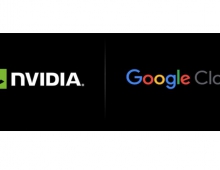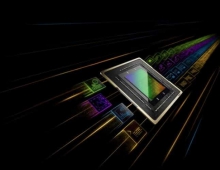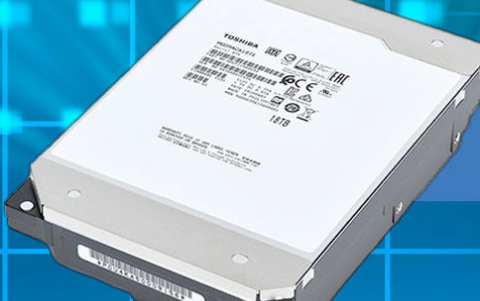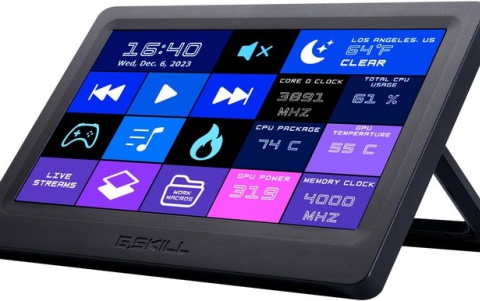
Nvidia Lowers Estimates, Admits Slow 28nm Ramping
Nvidia's Q4 financial results beated analyst expectations although the company remained pessimistic in its revenue forecast.
The chip maker reported revenue for fiscal 2012 ended Jan. 29, 2012 of $4.00 billion, up 12.8 percent from $3.54 billion in fiscal 2011.
GAAP earnings per share for the year were $0.94 per diluted share, an increase of 118.6 percent over $0.43 in fiscal 2011. Non-GAAP earnings per share for fiscal 2012 were $1.19, up 46.9 percent over $0.81 in fiscal 2011.
Nvidia had been predicting revenue of $950 million for Q4 of 2011.
The growth in earnings over the prior fiscal year was attributable to the success of Nvidia's consumer GPU business, led by strength in its Fermi-generation GPUs in desktop and notebook, and its royalty revenues related to our patent cross licensing agreement with Intel.
"I am pleased with our achievements last year. Our GPU business grew sharply. And, with the success of Tegra, we established our position in the mobile market," said Jen-Hsun Huang, president and chief executive officer of NVIDIA. "We expect continued growth ahead, as Tegra 3 powers a new wave of quad-core super phones and Kepler, our next-generation GPU architecture, sets new standards in visual and parallel computing."
The firm forecasted revenue of between $900 million and $930 million for the end of fiscal Q1 2013 and just $4.18 billion for the full fiscal year. The firm blamed its conservative outlook on delays in ramping at 28nm, and hard-disk shortages due to last year?s Thai flooding.
Nvidia CEO Jen-Hsun Huang said TSMC's constricted supply of 28nm chips was also potentially a limiting factor.
"New generations of smartphones, new generations of GPUs are going to drive the demand for 28-nanometer capacity. ... And so I think you're going to find that this year is going to continue to be tight," he said.
Moving to the next generation of chips based on 28 nanometer manufacturing technology is proceeding more slowly than expected, Huang added. He characterized this as the "28 nanometer yield shortage."
Huang also said Nvidia competes primarily with Qualcomm, which is the only chip company right now shipping an application processor with an integrated LTE "4G" modem. In response, Nvidia will bring out an integrated chip that combines an Nvidia Tegra processor and an LTE modem later this year.
Huang also intimated that HTC would bring out a quad-core Tegra 3 smartphone.
Nvidia is also eying the Chinese market offering inexpensive dual-core smartphones that underprice the iPhone 4S by a wide margin. The phones will use Nvidia's dual-core Tegra 2 processor paired with a 3G modem, according to Huang. Nvidia hopes that sales of these phones would help the company compete with Samsung and Apple. Both companies are not using Nvidia's chips in their highly demanded products, which keep gaining more market share.
Huang added he saw plenty of growth ahead as the quad cored Tegra 3 mobile application processor came into the market inside tablets like the Asus Transformer prime and other upcoming devices, purportedly later this quarter.
Huang predicted revenue from Tegra would grow by around 50 percent in 2012.
Nvidia's 28nm GPUs
Nvidia is set to launch 28nm Kepler GPUs in April, according to sources from graphics card makers. The company is expected to have at least eight models of graphics cards in April including GTX690, GTX660 and GTX640 with GK110, GK104 and GK106 cores.
Rival AMD is also set to launch the Radeon HD 7870 and 7850 GPUs in the first half of March.
Although Nvidia's release of 28nm GPUs was delayed compared to AMD, the fact that Intel will not introduce Ivy Bridge until end of April will help Nvidia compete with AMD, as both GPU makers are expected to see their 28nm competition at the fiercest in April-May.
GAAP earnings per share for the year were $0.94 per diluted share, an increase of 118.6 percent over $0.43 in fiscal 2011. Non-GAAP earnings per share for fiscal 2012 were $1.19, up 46.9 percent over $0.81 in fiscal 2011.
Nvidia had been predicting revenue of $950 million for Q4 of 2011.
The growth in earnings over the prior fiscal year was attributable to the success of Nvidia's consumer GPU business, led by strength in its Fermi-generation GPUs in desktop and notebook, and its royalty revenues related to our patent cross licensing agreement with Intel.
"I am pleased with our achievements last year. Our GPU business grew sharply. And, with the success of Tegra, we established our position in the mobile market," said Jen-Hsun Huang, president and chief executive officer of NVIDIA. "We expect continued growth ahead, as Tegra 3 powers a new wave of quad-core super phones and Kepler, our next-generation GPU architecture, sets new standards in visual and parallel computing."
The firm forecasted revenue of between $900 million and $930 million for the end of fiscal Q1 2013 and just $4.18 billion for the full fiscal year. The firm blamed its conservative outlook on delays in ramping at 28nm, and hard-disk shortages due to last year?s Thai flooding.
Nvidia CEO Jen-Hsun Huang said TSMC's constricted supply of 28nm chips was also potentially a limiting factor.
"New generations of smartphones, new generations of GPUs are going to drive the demand for 28-nanometer capacity. ... And so I think you're going to find that this year is going to continue to be tight," he said.
Moving to the next generation of chips based on 28 nanometer manufacturing technology is proceeding more slowly than expected, Huang added. He characterized this as the "28 nanometer yield shortage."
Huang also said Nvidia competes primarily with Qualcomm, which is the only chip company right now shipping an application processor with an integrated LTE "4G" modem. In response, Nvidia will bring out an integrated chip that combines an Nvidia Tegra processor and an LTE modem later this year.
Huang also intimated that HTC would bring out a quad-core Tegra 3 smartphone.
Nvidia is also eying the Chinese market offering inexpensive dual-core smartphones that underprice the iPhone 4S by a wide margin. The phones will use Nvidia's dual-core Tegra 2 processor paired with a 3G modem, according to Huang. Nvidia hopes that sales of these phones would help the company compete with Samsung and Apple. Both companies are not using Nvidia's chips in their highly demanded products, which keep gaining more market share.
Huang added he saw plenty of growth ahead as the quad cored Tegra 3 mobile application processor came into the market inside tablets like the Asus Transformer prime and other upcoming devices, purportedly later this quarter.
Huang predicted revenue from Tegra would grow by around 50 percent in 2012.
Nvidia's 28nm GPUs
Nvidia is set to launch 28nm Kepler GPUs in April, according to sources from graphics card makers. The company is expected to have at least eight models of graphics cards in April including GTX690, GTX660 and GTX640 with GK110, GK104 and GK106 cores.
Rival AMD is also set to launch the Radeon HD 7870 and 7850 GPUs in the first half of March.
Although Nvidia's release of 28nm GPUs was delayed compared to AMD, the fact that Intel will not introduce Ivy Bridge until end of April will help Nvidia compete with AMD, as both GPU makers are expected to see their 28nm competition at the fiercest in April-May.




















